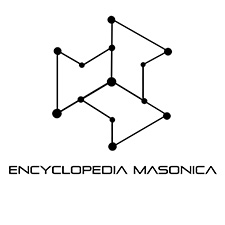
WHITE
Encyclopedia Masonica
White is one of the most ancient as well as most extensively diffused of the symbolic colors. It is to be found in all the ancient Mysteries, where it constituted, as it does in Freemasonry, the investiture of the candidate. It always, however, and everywhere has borne the same signification as the symbol of purity and innocence. In the religious observances of the Hebrews, white was the color of one of the curtains of the Tabernacle, where, according to Josephus, it was a symbol of the element of earth; and it was employed in the construction of the ephod of the High Priest, of his girdle, and of the Breastplate.
The word laban, which in the Hebrew language signifies to make white, also denotes to purify; and there are to be found throughout the Scriptures many collisions to the color as an emblem of purity. "Though thy sins be as scarlet," says Isaiah, "they shall be as white as snow." Jeremiah, describing the once innocent condition of Zion, save, "her Nazarites were purer than snow, they were whiter than milk." "Many," says Daniel, "shall be purified and made white."
In Revelation, a white stone was the reward promised by the Spirit to those who overcame; and again, "he that overcometh, the same shall be clothed in white garments;" and in another part of the same book the Apostle is instructed to say that fine linen, clean and white, is the righteousness of the saints. The ancient prophets always imagined the Deity clothed in white, because, says Portal (Des Couleurs Symboliques, Concerning Symbolic Colors, page 35), "white is the color of absolute truth, of Him who is; it alone reflects all the luminous rays; it is the unity whence all the primitive colors emanate." Thus Daniel, in one of his prophetic visions, saw the Ancient of days, "whose garment was white as snow, and the flair of his head like pure wool." Here, says Doctor Henry (Ezposition), the whiteness of the garment "noted the splendor and purity of God in all the administrations of his justice."
Among the Gentile nations, the same reverence was paid to this color. The Egyptians decorated the head of their deity, Osiris, with a white tiara. In the school of Pythagoras, the sacred hymns were chanted in white robes. The Druids clothed their initiates who had arrived at the ultimate Degree, or that of perfection, in white vestments. In all the Mysteries of other nations of antiquity, the same custom was observed. White was, in general, the garment of the Gentile as well as of the Hebrew priests in the performance of their sacred rites. As the Divine Power was supposed to be represented on earth by the Priesthood, in all nations the Sovereign Pontiff was clad in white. Aaron was directed to enter the Sanctuary only in white garments; in Persia, the Magi wore white robes because, as they said, they alone were pleasing to the Deity; and the white tunic of Ormuzd is still the characteristic garment of the modern Parsees.
White, among the ancients, was consecrated to the dead, because it was the symbol of the regeneration of the soul. On the monuments of Thebes the manes or ghosts are represented as clothed in white; the Egyptians wrapped their dead in white linen; Homer (Iliad xviii, 353) refers to the same custom when he makes the attendants cover the dead body of Patroclus, with a white pall; and Pausanias tells us that the Messenians practiced the same customs, clothing their dead in white, and placing crowns upon their heads, indicating by this double symbolism the triumph of the soul over the empire of death. The Hebrews had the same usage. Saint Matthew (xxvii, 59) tells us that Joseph of Arimathea wrapped the dead body of our Lord "in a clean linen cloth." Adopting this as a suggestion; Christian artists have in their paintings of the Savior after His resurrection, depicted Him in a white robe.
And it is with this idea that in the Apocalypse white vestments are said to be the symbols of the regeneration of souls, and the reward of the elect. It is this consecration of white to the dead that caused it to be adopted as the color of mourning among the nations of antiquity. As the victor in the games was clothed in white, so the same color became the symbol of the victory achieved by the departed in the last combat of the soul with death. "The friends of the deceased wore," says Plutarch, "his livery, in commemoration of his triumph." The modern mourning in black is less philosophic and less symbolic than this ancient one in white.
In Speculative Freemasonry, white is the symbol of purity. This symbolism commences at the earliest point of initiation, when the white apron is presented to the candidate as a symbol of purity of life and rectitude of conduct. Wherever in any of the subsequent initiations this color appears, it is always to be interpreted as symbolizing the same idea. In the Thirty-third Degree of the Ancient and Accepted Scottish Rite, the Sovereign Inspector has been invested with a white scarf as inculcating that virtuous deportment above the tongue of all reproach which should distinguish the possessors of that Degree, the highest in the Rite.
This symbolism of purity was most probably derived by the Freemasons from that of the primitive church, where a white garment was placed on the catechumen who was about to be baptized, as a token that he had put off the lusts of the flesh, and, being cleansed from his former sins, had obliged himself to maintain an unspotted life. The ancient symbolism of regeneration which appertained to the ancient idea of the color white has not been adopted in Freemasonry; but would be appropriate in an Institution having a chief dogma in the resurrection.
